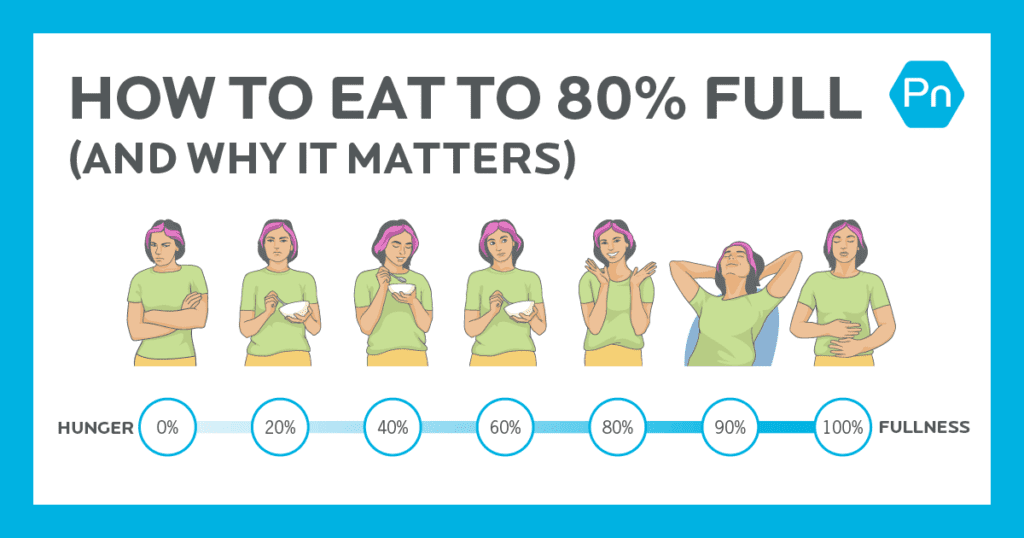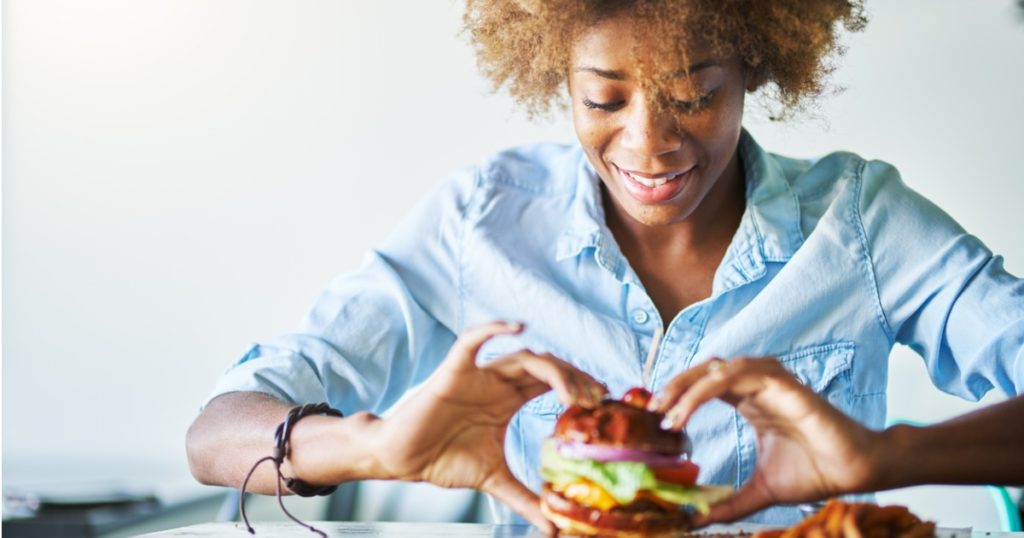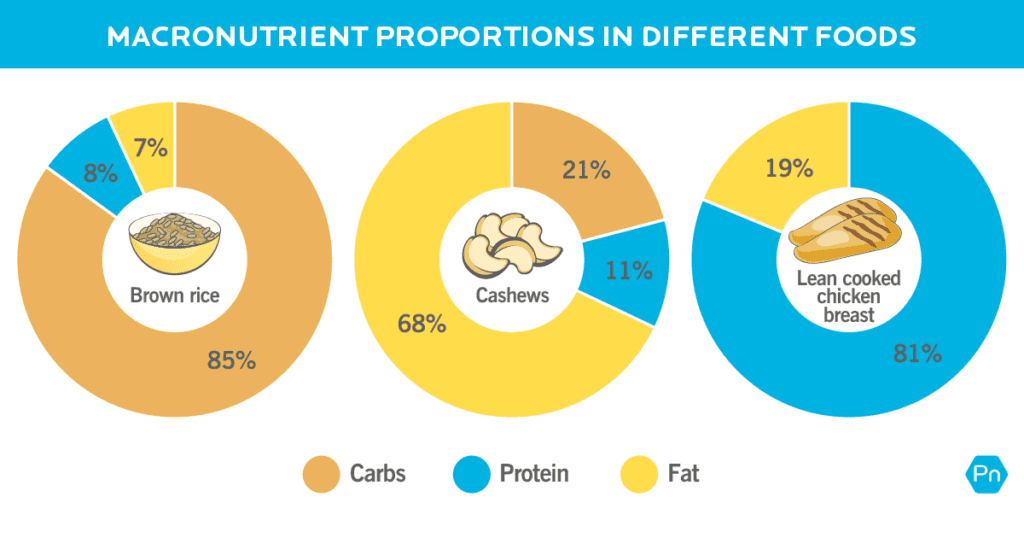Here’s an unpopular opinion…
Macro-style food logging and tracking (think: MyFitnessPal) is NOT the best way to coach your clients on nutrition.
There, I said it. Now hear me out…
I’ve been a nutrition coach for over 10 years and have worked with more than 1,000 clients. I now use my knowledge and skills to help gym owners and coaches grow and systemize their own businesses, so I get to see how coaching methods work on a large scale.
I’ve tried many different nutrition coaching styles over the last decade: entirely macro-based, habit coaching with food tracking, and entirely habit-based with no macros at all.
What if I told you that when I stopped having clients count macros, they experienced:
- Better results
- Higher compliance
- A happier journey
- Less stress
- Better eating intuition
- A longer coach/client relationship
Well, that’s exactly what happened.
Make no mistake: I don’t hate macros. They definitely have their place.
(Related: The complete guide to using—and coaching—macros.)
But for 99 percent of clients, I just think there’s a better way.
So what is it?
Photos, people. Photos.
I have clients track what they eat by taking a picture of their meal.
It’s simple, easy, and effective—and as a result, you get high compliance.
But the best part? It provides way more information and coaching opportunities than conventional tracking.
I know what some of you are saying:
“You can’t determine calories or macros with only photos!”
It doesn’t matter.
When it comes to food, there are more important details to address than WHAT clients are eating.
And photos help you see what macro-tracking can’t: the full picture.
To get the most out of them, though, you’ll need to know what to look for.
I have a method for that.
I call this method The 5 Ws.
Who, when, where, why, and what.
Let me explain each, along with the coaching opportunities they present.
(And for more nutrition, health, and coaching advice, sign up for PN’s FREE weekly newsletter, The Smartest Coach in The Room.)
1. Who are they eating with?
Who someone eats with can impact the food choices they make, as well as the amount of food they consume.
Have you ever had a friend who eats super healthy? Ever find yourself making healthier choices while eating with this person?
The inverse is also true. It’s more tempting to go wild on a Friday night when your friend, partner, or coworker is indulging, too.
Sometimes, simply helping your client gain awareness that they tend to overeat around a certain person can be a game-changer. (And no, I’m not suggesting they end the relationship.)
2. When are they eating?
Did your client (unintentionally) wait until 3 pm for lunch because they got busy or didn’t plan properly?
Here’s an example of when this kind of info can be super useful. If you uncover a pattern of missed meals, you can look at why that’s happening and either:
- Option 1: Help your client build more structure into their day to prevent missing meals
- Option 2: Come up with “if-then” scenarios for when it does happen. Example: “IF I miss my lunch, THEN I will get XYZ meal/snack”
3. Where are they eating?
You can learn a lot from looking at your client’s eating environment.
➤ Are they sitting at their desk in front of their keyboard, working through lunch? They might not be taking the time to chew their food thoroughly, which could lead to overeating.
Here, you might work on eating to 80 percent full as a next step.
(Learn more: How to eat until 80% full)
➤ Are they sitting on the couch watching TV? They might be chowing down mindlessly, another reason folks overeat.
In this case, you might focus on learning to eat slowly.
(See: The 30-day slow eating challenge.)
➤ Are they eating at a dinner table? That’s great! They appear to set time aside for meals and are developing great habits here. (Can you say bright spots?)
➤ Does their food appear to come from their own kitchen, or is it in takeout containers? If your client logs chicken, broccoli, and sweet potato on a traditional food tracking log, you don’t know if that’s homemade or picked up from a local fast-casual restaurant, potentially laden with hidden oils and lots of sodium.
This could be an opportunity to educate them on different food preparation techniques, and explain why a home-cooked meal could be a better choice for their goals.
4. Why are they eating?
As coaches, we’d really benefit from asking this question more often.
Do people always eat out of hunger? Hardly.
People eat for a plethora of reasons, and hunger is often not the driving force. For example, people frequently eat because they’re happy, sad, stressed, tired, thirsty, or bored, or it could be due to environment, habit, culture, or tradition.
If you find that a client’s stress eating, you could help them find ways to better manage their stress, such as meditation and exercise.
Or perhaps they’re a social butterfly, and for them, eating is part of the social experience.
You can collaborate with your client on ways to make the best choices possible while celebrating with their friends and family—rather than feeling like they have to stay home.
Ignoring the many reasons why your client eats can make them feel like there’s something wrong with them. Instead, help them develop the tools to lean into their WHY in a positive way.
5. What are they eating?
To me, this is the least important question. Because in my opinion, there’s not a great coaching opportunity here.
If your client isn’t making great choices, more than likely, one of the other 5 Ws is at play.
How does it work, exactly?
Here are some practical tips for putting this strategy into practice.
➤ Use photo logging when onboarding clients. For the first two weeks working together, I have clients take daily photos of their meals.
Then, they upload the photos into folders organized by meal: breakfast, lunch, dinner, and two snacks, for example.
After the first two weeks, I let the client choose if they want to continue taking photos.
➤ Look for patterns. You might notice your client is frequently skipping breakfast or snacks while feeling hungry throughout the day.
These patterns provide a great starting point for your coaching.
(You can encourage your client to look for patterns as they eat by using resources like Precision Nutrition’s Eating Behaviors Journal and How Food Feels Journal.)
➤ Make it collaborative. I don’t typically do official “reviews” of client photo logs.
You never want your client to feel like they’re being graded.
Instead, try asking questions about their photos rather than making statements about what you see.
For instance, you might ask: How did this breakfast work for you? How did you feel a few hours later?
➤ Let your client suggest next steps. Once you’ve worked together to identify some areas for improvement, ask your client what they feel like they could change with confidence.
This is where they decide on a new action to practice.
My goal isn’t to persuade you to abandon macros.
(Especially if that approach is working great for you.)
Rather, I want to share an alternative tool that’s profoundly affected the way I coach.
Give it a try.
I know it can be scary, but in my experience with over a thousand people, you’ll get better results and much happier, more balanced clients in the end.
If you’re a coach, or you want to be…
You can help people build sustainable nutrition and lifestyle habits that will significantly improve their physical and mental health—while you make a great living doing what you love. We'll show you how.
If you’d like to learn more, consider the PN Level 1 Nutrition Coaching Certification. (You can enroll now at a big discount.)





Share